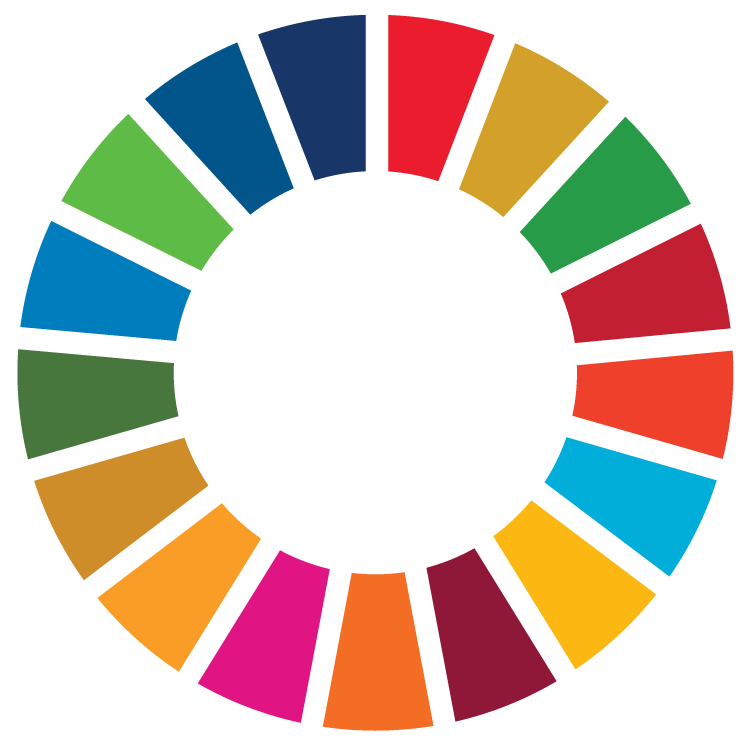
Text traduït
Aquesta assignatura s'imparteix en espanyol. El pla docent en català és una traducció de l'espanyol.
La traducció al català està actualitzada i és equivalent a l'original.
Si ho prefereixes, consulta la traducció!
Texto original
Esta asignatura se imparte en español. El texto original de este plan docente es en español.
Text created with automatic translation
The language of instruction of this subject is Spanish. The course guide in English is an automatic translation of the version in Spanish.
Automatic translation may contain errors and gaps. Refer to it as non-binding orientation only!
Perhaps you should consult the original version of the text!
Course
Journalism
Subject
Audiovisual Production Workshop
Type
Compulsory (CO)
Academic year
3
Credits
9.0
Semester
1st
| Group | Language of instruction | Teachers |
|---|---|---|
| G11, classroom instruction, mornings | Spanish | Marta Sànchez Cuadrado |
| Víctor Palomar Aumatell |
Sustainable Development Goals (SDG)

- 5. Gender equality
Objectives
- Consolidate previously acquired knowledge about audiovisual informational genres and promote learning about new ones.
- Produce and perform complex audiovisual productions integrating the different genres in the same context, program and medium.
- Work on the interview, reporting and dialogue for the final realization of informative programs.
Learning outcomes
- Recognize the elements and values of journalism, the routines and procedures, as well as the genres and formats that characterize the exercise of the journalistic profession.
- Communicate information, ideas, arguments, comments or opinions in an orderly and clear manner to both specialized and non-specialized audiences, taking linguistic, social, cultural and gender diversity into account.
- Apply critical thinking, ethical commitment and strategic vision to the different phases of professional journalism routines and in the relationship with diverse audiences.
- Use appropriate knowledge and methods for project planning and development through proper time management, decision-making and problem-solving.
- Master the written, oral, audiovisual, graphic, hypertextual and multimedia languages, to present information in an effective journalistic way, both in Catalan and Spanish and in English, and with adaptation to the medium and the audience.
- Apply the theoretical, narrative and technological foundations of audiovisual media to be able to carry out the different processes that make up productive routines with solvency.
- Develop professional or academic tasks and projects in complex environments through effective cooperation with plural teams in face-to-face or virtual environments, and with efficient use of digital resources and tools.
Content
- Audiovisual genres and macro genres
- The interview: typology, production and realization
- Reportage as an audiovisual genre
- Colloquial genres in audiovisual media. Specificities of radio and television
- The radio program. Genres, formats and types of programs in current radio
- Genres and their audiovisual specificity
- The television program. Formats and typology
- The television magazine. Production and realization
Evaluation
The assessment is continuous and face-to-face (all sessions must be attended). To pass the subject you must have passed both the television and radio sections. Students can recover a suspended practice during the course.
Grade weighting
The indicated percentages include observation of participation and monitoring of work done.
- Television practices (50% of the final grade)
- Creating, producing and conducting an interview on set (15%)
- Creation, realization and editing of a report, with tutored follow-up outside the study (15%)
- Creation, production and realization of an informative magazine on set (20%)
- Radio practices (50% of the final grade)
- Creating, producing and conducting an interview (15%)
- Creation, production and realization of a report (15%)
- Creation, production and realization of an informative magazine (20%)
Additional considerations
- The evaluation is continuous and the implementation of the practices, mandatory.
- The magazine acts as a final test and integrates the knowledge of each part of the subject.
- Attempts at fraud or plagiarism are punishable by suspension from practice.
- At the end of each practice, students must make a report.
Methodology
There are three types of sessions:
- Theoretical sessions with the whole group: viewing support and analysis of audiovisual programs
- Practical sessions in the radio and television spaces: the division of subgroups is suitable for the realization of each practice
- Follow-up tutorial for the realization of audiovisual productions external to the sessions
The contents of the subject are divided into two parts: one for radio and one for television. Despite this thematic division, the subject consists of a theoretical part and some practical sessions on the television set and in the radio studio to develop most of the material, eminently practical.
The dynamic of the classes means that every week the students have some practice on set or in the studio, so that they become familiar with the infrastructures, routines and needs of each medium and can put into practice the knowledge acquired in theory. To do this, it is essential to follow the subject's work plan in which the students can find specified weekly the forecast of what will be done in class group sessions, in the hours allocated to subgroups and in the hours of personal work
Bibliography
Key references
- Martínez Costa, M.P., Díez Unzueta, J.R. (2005). Lenguaje, géneros y programas de radio. EUNSA.
- Oliva, Ll., Sitjà, X. (2007). Las noticias en radio y televisión: Periodismo audiovisual en el siglo XXI. IORTV.
Further reading
Teachers will provide complementary bibliography and compulsory reading throughout the course via the Virtual Campus.